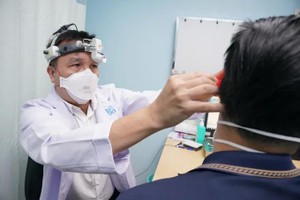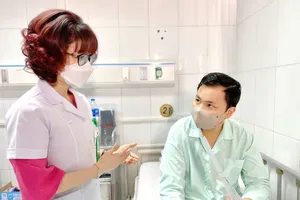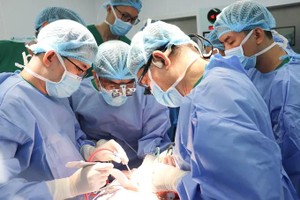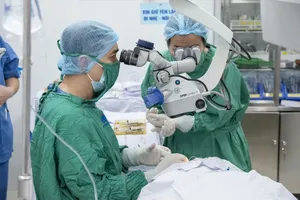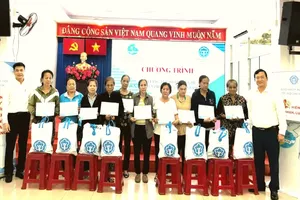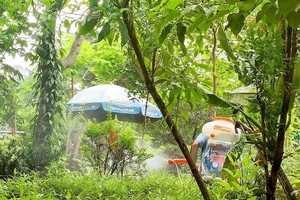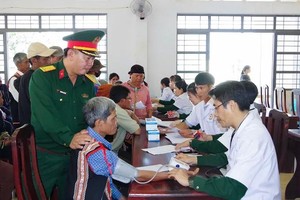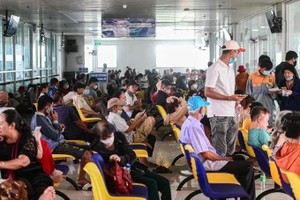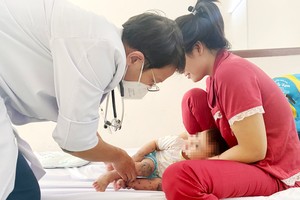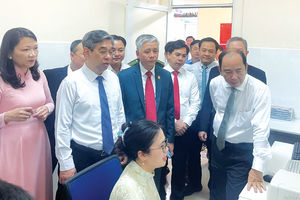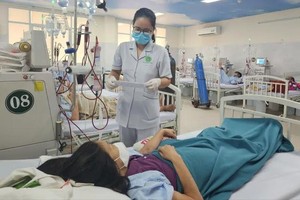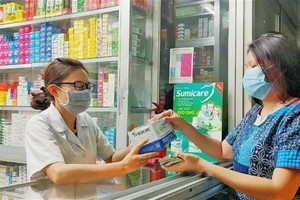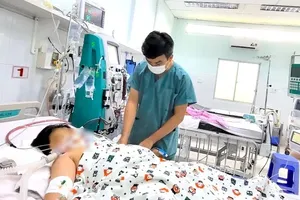
According to standard procedure, when counterfeit or substandard drugs are detected, the Drug Administration of Vietnam (DAV) under the Ministry of Health issues an official dispatch instructing local health departments, importers, distributors, and healthcare providers to recall the products. In practice, however, large quantities of such drugs often reach consumers before any official recall order is issued—leaving patients confused, vulnerable, and distressed.
Discovering a recall only after taking the medication
N.T.H., a 34-year-old resident of Go Vap District, Ho Chi Minh City, has been living with HIV for nearly two years. He has been on daily antiretroviral therapy using Acriptega, a drug produced by India-based Mylan Laboratories Limited and officially approved by the Ministry of Health in November 2019. For almost a year, he had taken the drug regularly, confident he was adhering to the proper regimen.
But during a recent visit to the pharmacy, he was shocked to be told the medication was under recall for quality violations and no longer available. “I’m outraged. I had taken countless bottles before even knowing the drug was substandard. For someone with a compromised immune system like me, I thought it was helping. Turns out it was doing nothing. Not only did I waste money, but my health could be at risk. Patients are spending millions of Vietnamese dongs on medicines approved by the Ministry of Health, only to end up with fake drugs—who’s going to take responsibility for that?” he said angrily.
Similarly, Nguyen Huy Hoang, 41, from District 1, Ho Chi Minh City, had been using PMC Hoat Huyet, a dietary supplement claimed to improve blood circulation and brain function, distributed by Hoang Giang Sai Gon Pharmaceutical Co. Ltd. Upon learning that the company had been criminally charged for producing counterfeit goods, he was anxious and alarmed.
Concerned for his health, Hoang contacted the Pharmacity Pharmacy on Cong Quynh Street to inquire about a refund, only to be told that compensation required proof of purchase and product packaging. “I’ve taken so many boxes, bought them so many times—how could I possibly remember? I don’t even have the packaging or receipts left to file a complaint,” Hoang said in frustration.
Vietnam currently has around 238 pharmaceutical factories certified under GMP-WHO standards—a globally recognized manufacturing benchmark issued by the World Health Organization. Among them, only 17 meet the stringent GMP-EU standards, enforced by the European Medicines Agency and the European Commission.
While locally produced medicines satisfy roughly 70 percent of domestic consumption by volume, they represent only about 46.3 percent of the market's value. Most active pharmaceutical ingredients are imported, and the domestic industry remains heavily skewed toward producing generics, with minimal investment in high-tech or innovative drugs.
According to Mr. Ta Manh Hung, Deputy Director of the DAV, imported and domestically registered drugs are routinely tested for quality and monitored for adverse reactions. Recalls are issued if the products fail to meet declared standards. However, field investigations by journalists found that by the time a recall notice is released, many of these drugs have already been distributed to pharmacies, hospitals, and clinics—and consumed by patients. For those who unknowingly ingest substandard medicine, the question remains: who will take responsibility if their health suffers?
Patients bear the brunt
Dr. Nguyen Trung Cap, Deputy Director of the National Hospital for Tropical Diseases, emphasized that fake and substandard medicines are extremely dangerous, yet distinguishing them visually is virtually impossible. The only reliable way is through testing at the National Institute for Drug Quality Control or certified provincial labs. But testing is both time-consuming and expensive. By the time a result is available, the medicine may have already been ingested by thousands—leaving the burden solely on patients.

From a pharmaceutical policy perspective, Prof. Dr. Le Van Truyen, former Deputy Minister of Health, stressed that medicines are not ordinary commodities—they are vital to public health. Drug quality control must be prioritized. Effective prevention of substandard medicine requires strong coordination between regulators, consumers, and pharmaceutical companies; expansion of safe medicine programs; increased investment in equipment and skilled personnel; and more frequent inspections and sampling. Sanctions must also be tougher to serve as a real deterrent.
Dr. Doan Cao Son, Director of the National Institute for Drug Quality Control, pointed out that drug quality is affected by numerous factors, from raw materials and excipients to manufacturing processes and storage conditions. Manufacturers bear primary responsibility for ensuring quality, sourcing certified raw materials, maintaining proper manufacturing environments, and complying with regulatory requirements.
Distributors and pharmacies must handle storage and transportation in accordance with prescribed standards, while healthcare professionals and consumers should use medications as directed. Regulatory agencies must reinforce both pre-market and post-market surveillance and impose strict penalties on companies that import or distribute substandard products. Equally important is investing in the professional and technological capacity of the drug testing system.
Under Ministry of Health regulations, pharmaceutical companies are fully responsible for the safety, efficacy, and quality of their products once they’re released to market. Consumers have the right to be informed, to file complaints or lawsuits, and to claim compensation for harm caused by substandard drugs.
Companies must immediately recall any product found to be below quality standards, report the recall to authorities, and respond promptly to customer complaints. They are also obligated to refund the purchase and cover all related costs including storage and transportation.
But despite the legal framework, public trust hinges on the effectiveness of the health system. People spend their hard-earned money hoping for a cure, only to discover too late that the drugs they relied on were ineffective—or worse, harmful. In the end, it’s the patients who suffer the most.
Bottlenecks in drug sampling and testing
Ms. Nguyen Thi Truc Van from the Ho Chi Minh City Drug Quality Control Institute noted serious challenges in sampling procedures. The institute's staff do not have the authority of quality control inspectors, so they are often denied access to samples at distribution points. Common excuses include the absence of an authorized representative, inability to issue an invoice, refusal to sign sampling records, or to settle payments on the spot.
Moreover, there is a lack of clear guidelines for sampling on e-commerce platforms, making it difficult to properly seal and document samples. Standard reference substances used in testing—especially for controlled substances or patented drugs—are frequently unavailable, expensive, and lack reliable suppliers. For specialized or branded medications, even the impurity standards are often missing. A more effective mechanism is urgently needed to overcome these hurdles and strengthen drug surveillance in the market.

